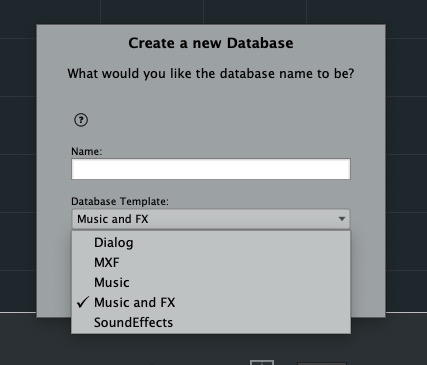

- #Create your own fields of the media meta data. archive#
- #Create your own fields of the media meta data. mods#
If your metadata will be captured automatically or by specialists, it should be mandatory to fill in every field applying to every instance. MandatoryĪll fields should be mandatory – unless there is a serious reason to make it optional. Even a shortĮxplanation for which information should be entered in a given field will help. Whether a dot or a comma is to be used to separate decimal places. For example, for the field “grade”,Īllow only the numbers 1 to 6 (or letters A to F) for numerical values, define Simplistic tools that will help you a lot as well. Information will always be stored in the same way. They prevent typing errors and ensure that the same Lists and Regular Expressions (a language for describing strings) are a great Information will be stored in which field in which form. EachĪlternative is an opportunity to choose the wrong option. The fewer alternatives there are in the scheme, the better. Prevent all unnecessary variance in the data. Will benefit from using one of these instead of your own carefully fitted
#Create your own fields of the media meta data. mods#
So, if iiRDS, Dublin Core or MODS provides all you need, you And last but not least, you won’t need to invest the effort in defining Widespread schemes come with tools and interfaces, simplifying maintenance even You can useĭata you get from others without adapting it if the same standard scheme is used. Using a standard scheme comes with a lot of advantages. Good that there is already a robust scheme or exchange format for your field ofīusiness. Many fields have been using metadata for a long time now. Prefer a standard scheme that fits well over a self-development that fits perfectly. This field is generated automatically in order to prevent contradictions. Time, you may save the combined value in an additional field – but make sure If there are combinations you need all the Thus, for every field, make sure there is no combination of multiple Two fields is easier and causes less trouble than splitting up the content of a

The key question is: What will the metadata be used for? Defining a field that is not needed at all or that will be empty in most cases due to difficulties in compiling the data is a waste of time.īreak the information down into the smallest parts possible, as combining It is worth investing some time in the concept. Of course, you can reuse parts of your scheme for the next set ofĬreate only the fields you will be using and divide the information into as many fields as possible.Ī metadata scheme consists of fields, each of which contains one specified piece of information. You don’t need to take other data intoĪccount. So, think about which data will be processed (managed, searched for) Thus, a scheme that is too general won’t help you On the other hand, very different kinds of data The scheme must match all data processed together – and only this data.Ī scheme matching all data at hand makes it possible to process all of By following some basic rules, you can develop a scheme perfectly suited for your data and its use. The best scheme is the one that best supports and simplifies data capturing and processing. reduces the effort in capturing metadata.enhances the metadata’s quality and thus, its worth.enables effective automated data processing and management.Given a good scheme, much of the metadata can even be captured or generated automatically. If there are rules in place for which data is to be stored where and in what form, typing errors can be detected during input. Of course, the scheme doesn’t just help the machines. Basically, a metadata scheme is nothing more than a definition of context and meaning. The more precise the definition of the structure, the easier the job becomes for the computer, and the better the results will be. You need to provide a structure from which they can gather the data’s context and meaning. But machines aren’t that capable of processing unstructured data. You don’t want to do the boring, repetitive stuff on your own, do you? These are things that machines can handle for you. This article will tell you why this is of such importance and what you should consider when designing your own scheme.
#Create your own fields of the media meta data. archive#
Metadata is really helpful, isn’t it? And it is even more helpful if it has the same structure for each document, as this allows the search engine to present only valid documents to you or you could transfer all outdated documents to the archive with a single click.īatch processing like this is only possible if there is a clearly defined structure for the metadata – a metadata scheme. Have you ever looked something up – let’s say a work instruction – but you couldn’t decide whether the information you found was still up to date? Maybe you were lucky and there was metadata linked to the document, telling you the period of validity or the like.


 0 kommentar(er)
0 kommentar(er)
